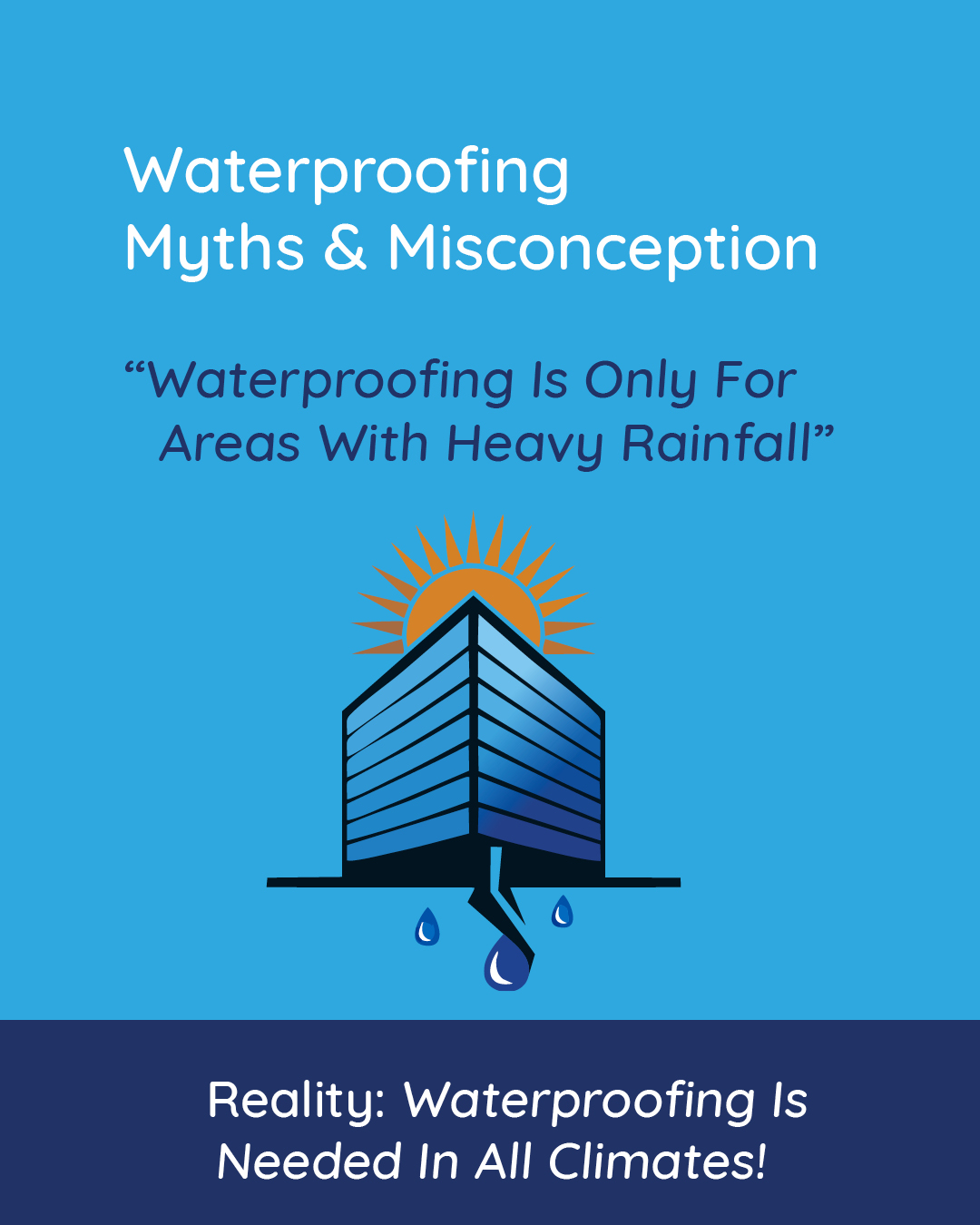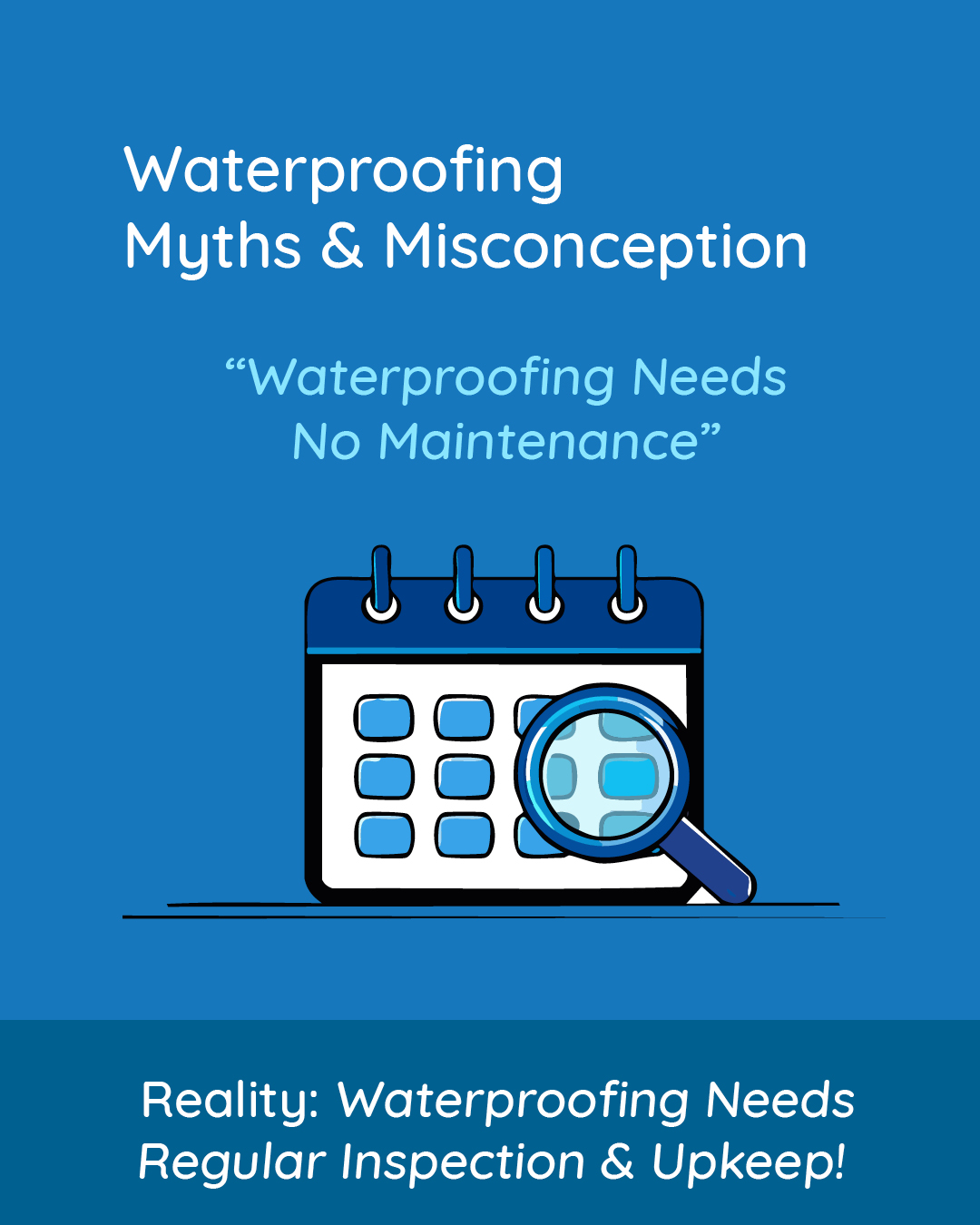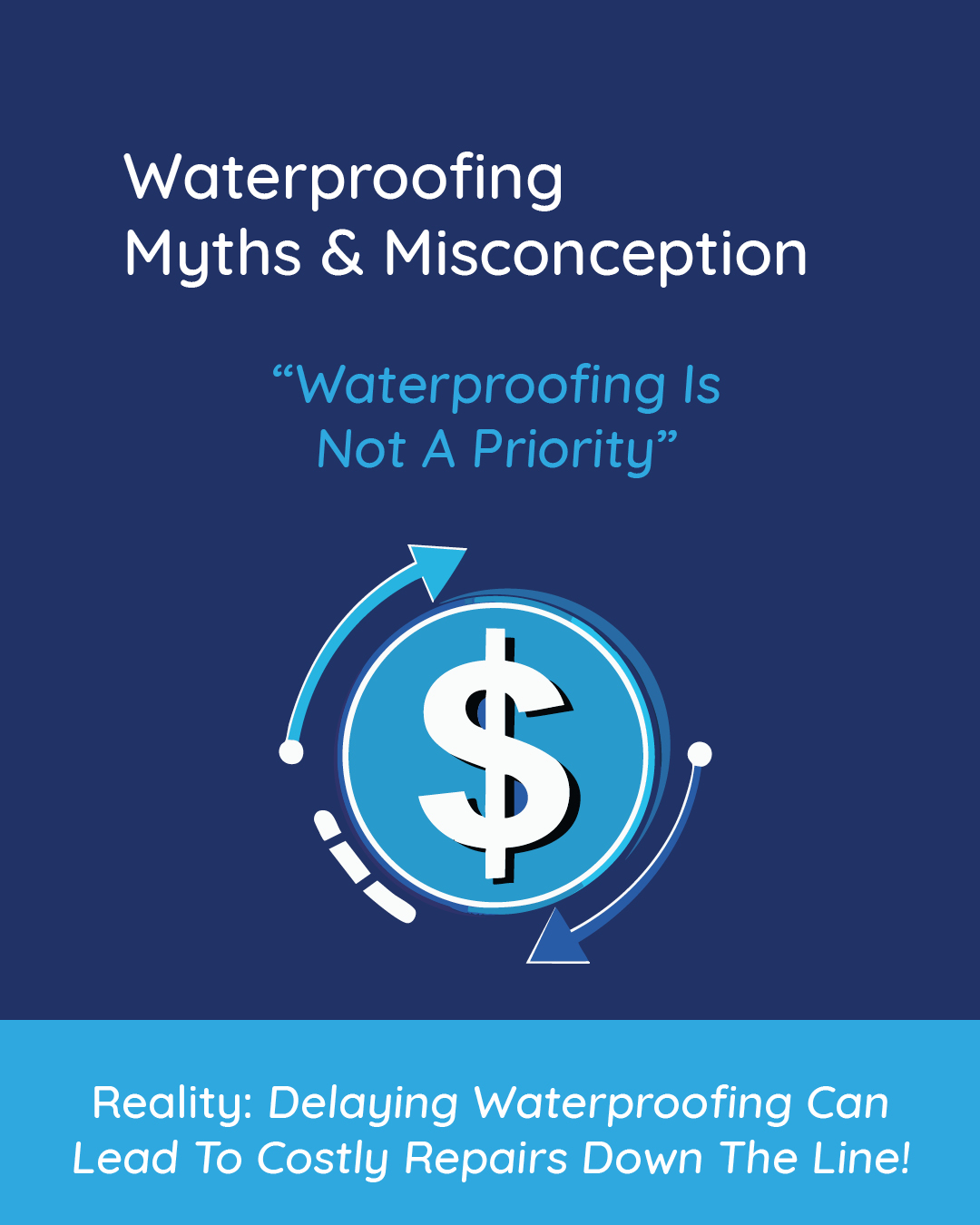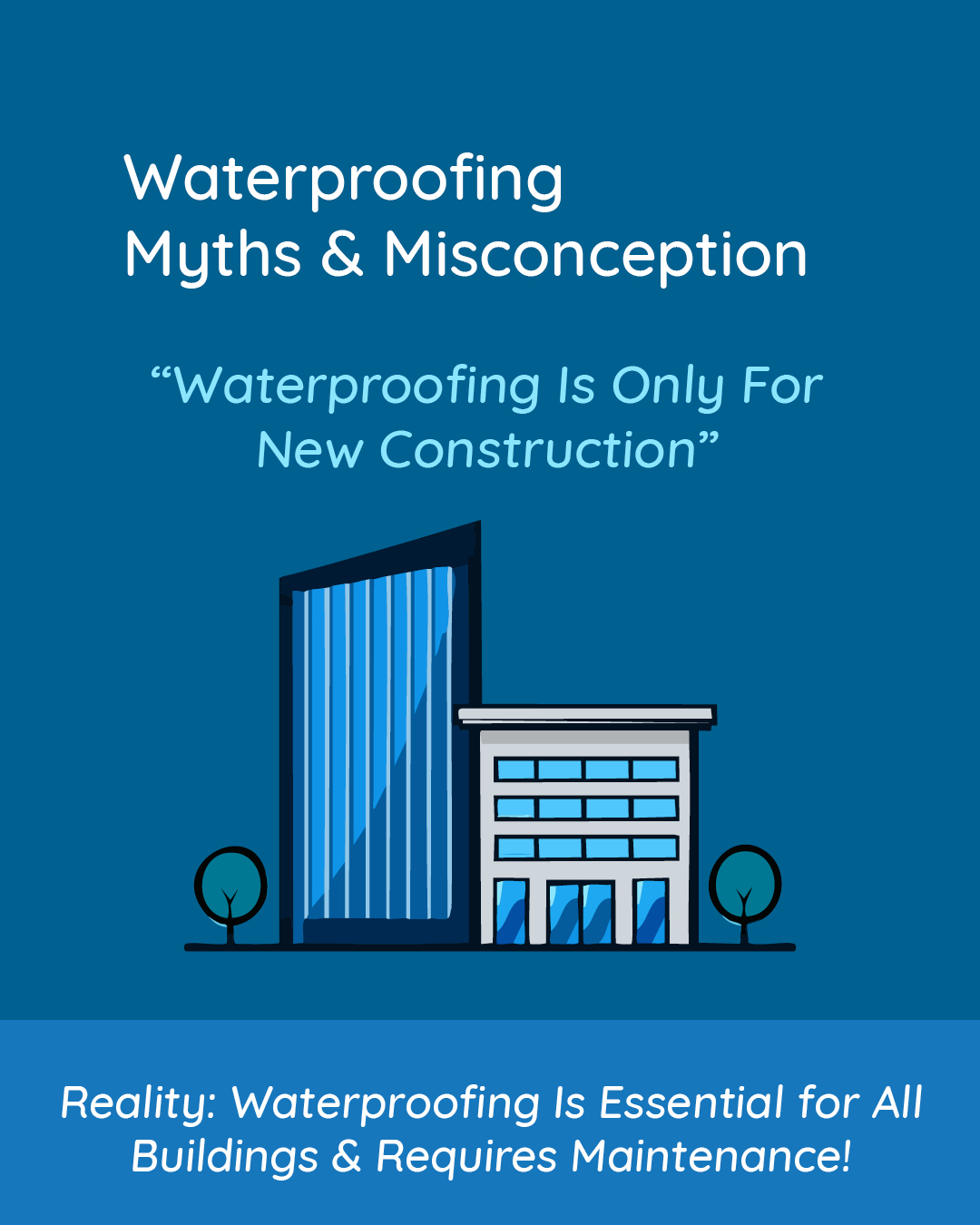There are many myths surrounding waterproofing that can lead to misunderstandings and costly mistakes. From the belief that waterproofing is only necessary in wet areas to the idea that it’s a one-time fix, these myths can affect the long-term integrity of your property. In this blog, we’ll address the most common waterproofing myths, answer your questions, and provide the facts you need to protect your building from water ingress and damage.

1. Is waterproofing only necessary in flood-prone areas?
While waterproofing is essential in flood-prone areas, it’s also crucial in any environment where moisture can cause damage. Water can seep into structures through joints, even in dry climates. Temperature changes, humidity, and even condensation can lead to moisture buildup that damages building materials, causing rust, mould, or deterioration over time.

2. Once waterproofing is done, do I need to maintain it?
Yes. Waterproofing is not a one-time fix. Sealants and membranes break down over time due to UV exposure, weather, and movement. Regular inspection and maintenance help prevent water ingress and ensure long-term performance.

3. Is waterproofing always expensive?
While high-quality waterproofing solutions can have an upfront cost, they are an investment in the longevity and integrity of the structure. The cost of repairs resulting from water damage—such as structural repairs, mould remediation, and interior damage—often far exceeds the initial investment in proper waterproofing.

4. Is waterproofing only for new builds?
Waterproofing is important in both new and existing buildings. In older structures, joints may have deteriorated, and waterproofing may need to be updated. Even in newly constructed buildings, waterproofing expansion joints is a crucial step to prevent future damage, and it’s essential to maintain it as the building ages.
More Waterproofing Misconceptions—As Questions
5. Are all waterproofing materials the same?
No. Different waterproofing products are designed for specific applications. For example, polyurethane sealants are great for flexible joints, while sheet membranes are better suited to areas exposed to hydrostatic pressure. Using the correct waterproofing system for your structure and environment is key to preventing water ingress and ensuring durability.
6. Can I ignore the supplier’s specifications when applying waterproofing products?
No—you risk system failure. Waterproofing suppliers provide product specifications based on thorough testing. Ignoring these guidelines can result in improper installation, reduced effectiveness, and a higher risk of water ingress. Always follow the manufacturer’s instructions to maintain compliance, durability, and safety.
7. Is more waterproofing product better?
Actually, no. Overapplying or combining too many waterproofing layers or incompatible materials can reduce adhesion and compromise system integrity. Using the right amount of the right product ensures reliable protection against water ingress—without risking failure.
8. Is waterproofing just about stopping leaks?
It’s about much more. While leak prevention is a core goal, waterproofing also defends against rising damp, mould growth, concrete cancer, and long-term damage caused by trapped moisture. A well-planned waterproofing system enhances indoor air quality, maintains structural integrity, and extends the lifespan of the building.
9. When would you need to call Stop and Seal?
Do you have water pooling on the ground?
Are there stains on your walls?
Do you have mould or peeling paint?
Are there rust stains?
If you answered yes to any of these questions then chances are you have a leak and its time to call Stop and Seal!
10. What if I still have waterproofing questions?
You’re not alone. Whether you’re seeing signs of water ingress, unsure which waterproofing system suits your needs, or simply want to prevent future damage, our team is here to help.
Need a Waterproofing Specialist? We’ve Got You Covered.

We provide waterproofing services Australia-wide, with our head office based on the Gold Coast. Our expert waterproofing solutions cover :
Queensland, including key service areas in Brisbane such as but not limited to Brisbane CBD, Fortitude Valley, Spring Hill, and West End, as well as Gold Coast areas like Southport, Surfers Paradise, Burleigh Heads, Coomera, Robina, and Tweed Heads. From injection waterproofing to membrane waterproofing, we offer a range of reliable solutions for both residential and commercial properties.
Victoria, we provide professional waterproofing services in Melbourne and surrounding areas, including but not limited to Melbourne CBD, Southbank, St Kilda, and Docklands. We also service other parts of Victoria, offering membrane waterproofing and other high-quality waterproofing solutions across regions such as Geelong, Werribee, Ballarat, and beyond. Our injection waterproofing methods ensure long-lasting protection for your property.
New South Wales, Our NSW Metro franchise is available to assist with waterproofing needs NSW Metro. From injection waterproofing to membrane waterproofing, we have the expertise to solve a wide range of waterproofing problems. You can reach our NSW Metro franchise directly at [email protected] or 0418 830 860.
Let’s Talk Waterproofing!
Got a question? Leak? Project coming up? Reach out to the waterproofing professionals at Stop & Seal.
